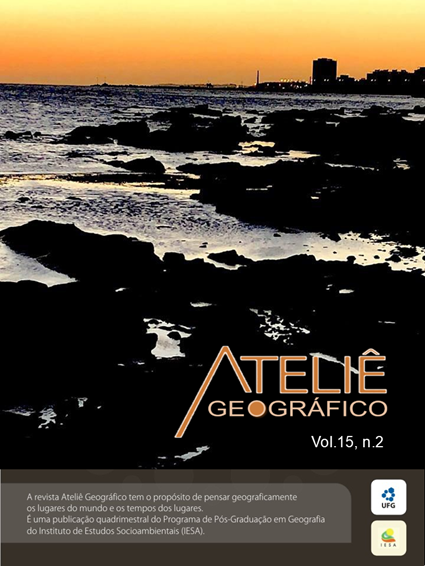Environmental conflict in Ilha Verde Community: institutional articulation and cartographic activism
DOI:
https://doi.org/10.5216/ag.v15i2.66094Abstract
Ilha Verde Community, located in the region Babaçulândia (TO), was accused of occupying an Environmental Protection Area (APA), sometimes treated as a Permanent Preservation Area (APP) which would belong to Estreito Dam reservoir (MA). Once the conflict was installed, the community used the following strategies: the visibility of agroecological production, institutional articulations and the construction of a participant cartography. This way, our goal is to analyze the use of participant cartography during the process in order to understand it. The methodological procedures for achieving it was based on training people from the community and the university on the uses of cartography in environmental conflicts, production of data in field work, the confirmation of maps produced by the entities involved as well as the delivery of maps for their use in the legal defense of the community. The cartography showed that the community produced food without pesticides, it did not occupy APP and proposed the recovery of degraded areas. But even so it was removed from the territory due to an improperly occupation area of the reservoir (APA).
Keywords: Participatory mapping. Socio-environmental conflicts. Institutional Articles.
Downloads
Downloads
Published
How to Cite
Issue
Section
License
Autores que publicam nesta revista concordam com os seguintes termos:- Autores mantém os direitos autorais e concedem à revista o direito de primeira publicação, com o trabalho simultaneamente licenciado sob a Licença Creative Commons Attribution que permite o compartilhamento do trabalho com reconhecimento da autoria e publicação inicial nesta revista.
- Os autores não serão remunerados pela publicação de trabalhos na Revista Ateliê Geográfico. Além disso, os conteúdos publicados são de inteira e exclusiva responsabilidade de seus autores, ainda que reservado aos editores o direito de proceder a ajustes textuais e de adequação às normas da publicação.
- Autores têm permissão e são estimulados a divulgar seu trabalho online (ex.: em repositórios institucionais ou na sua página pessoal), já que isso pode gerar alterações produtivas, bem como aumentar o impacto e a citação do trabalho publicado (Veja O Efeito do Acesso Livre).


